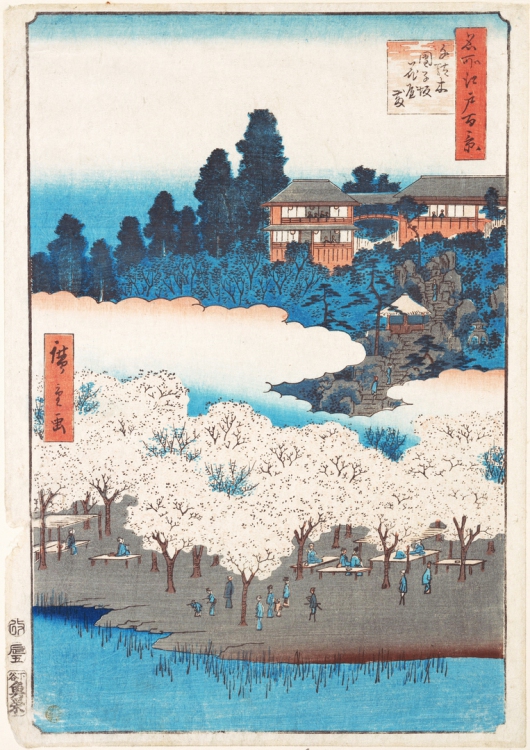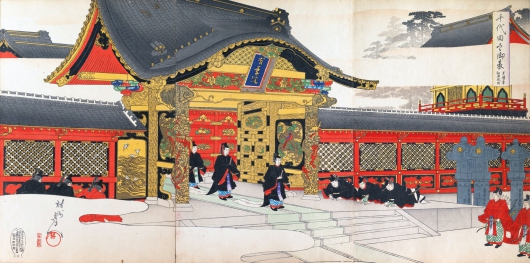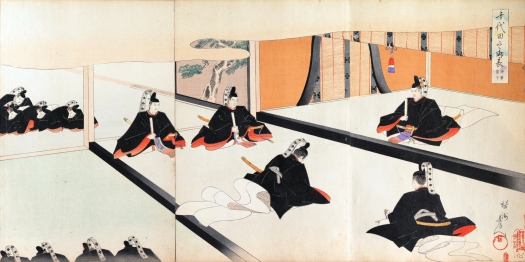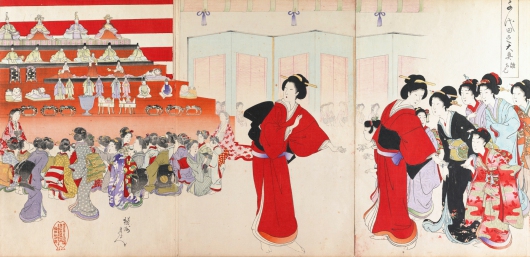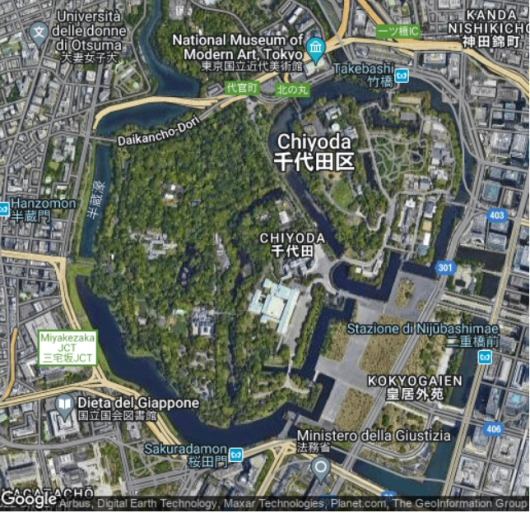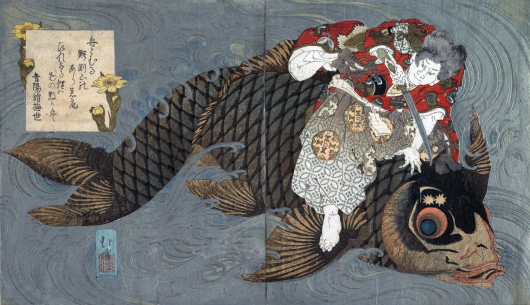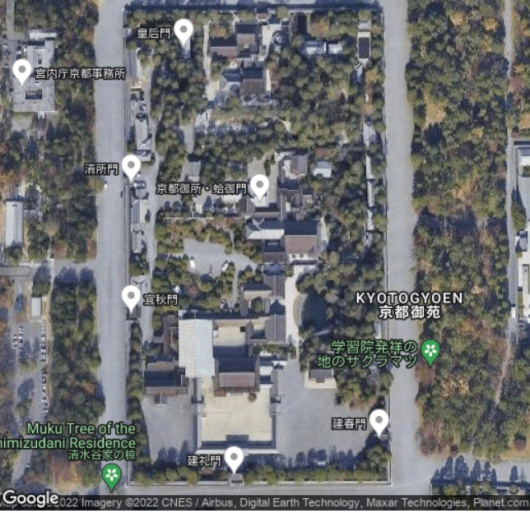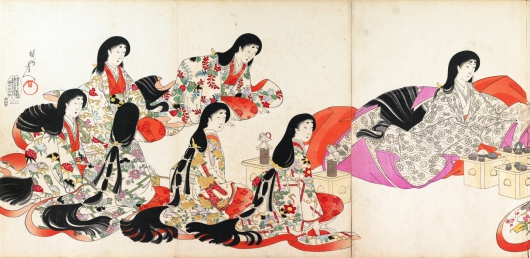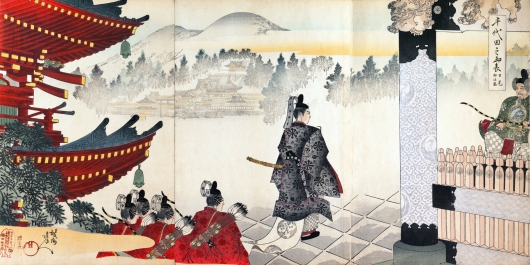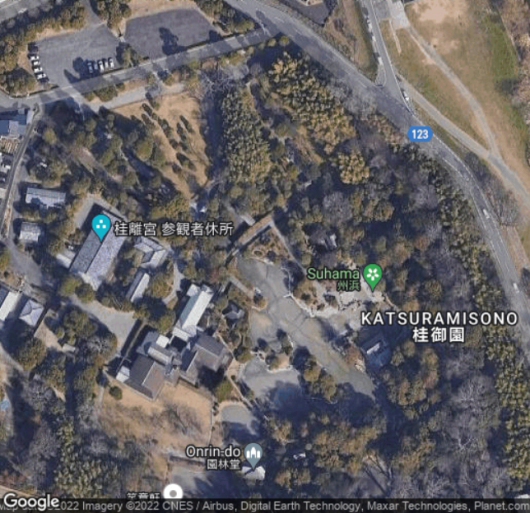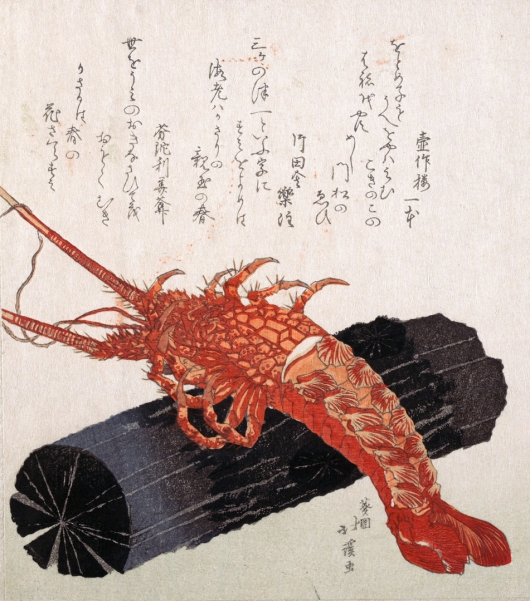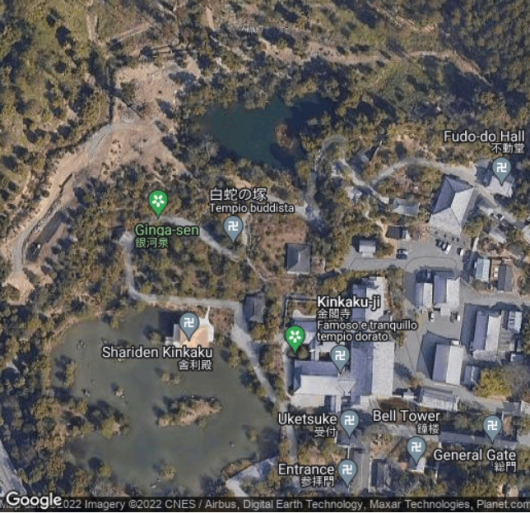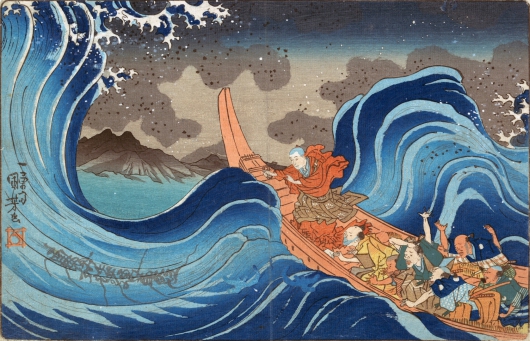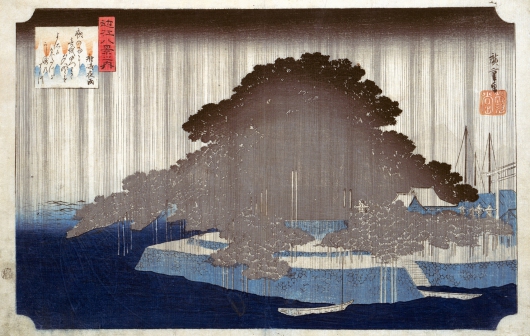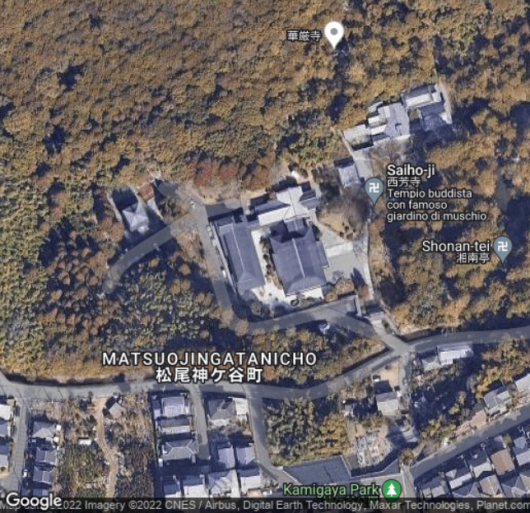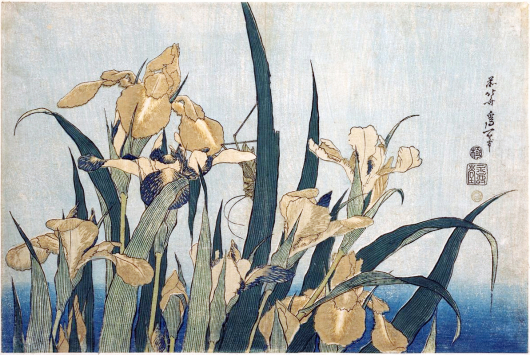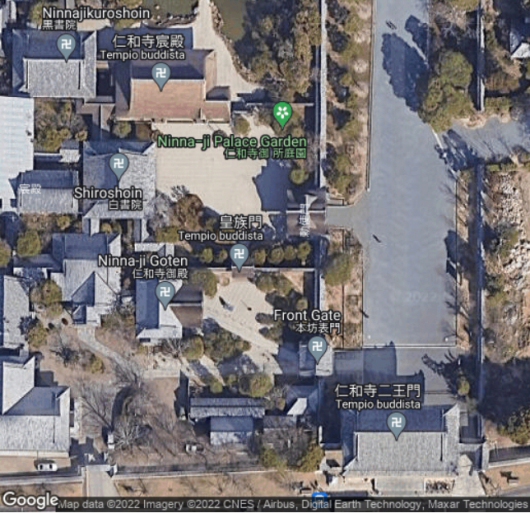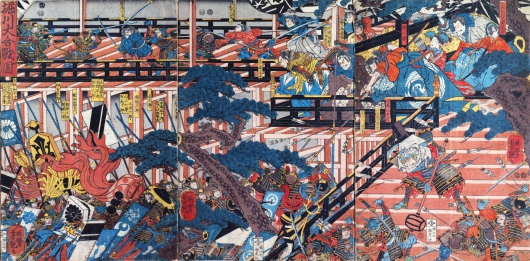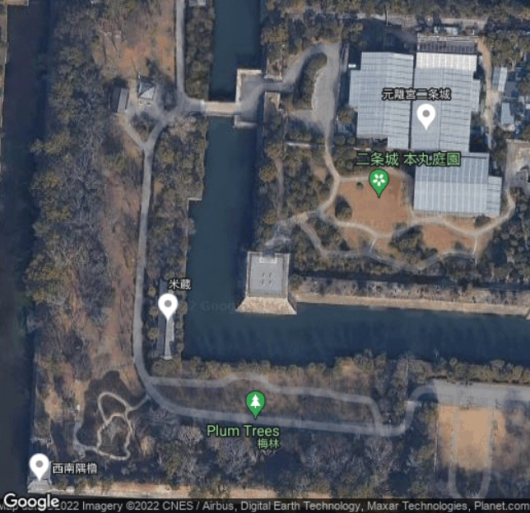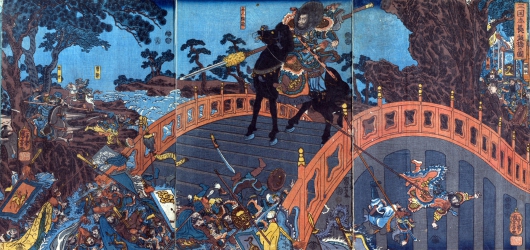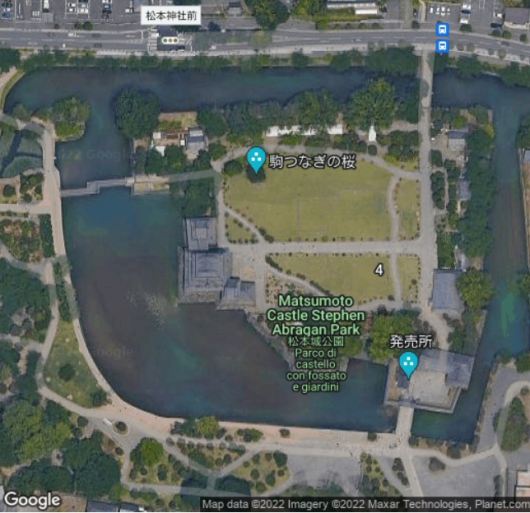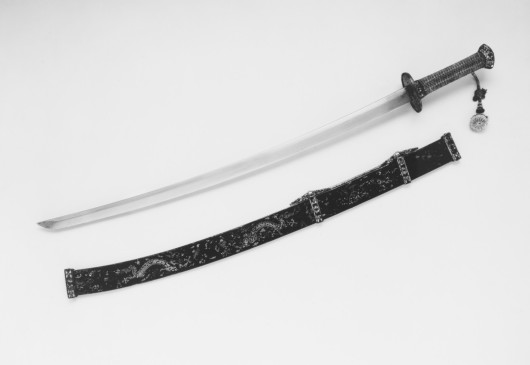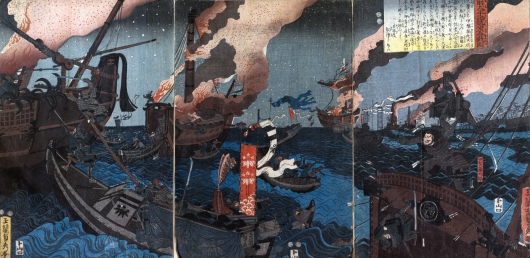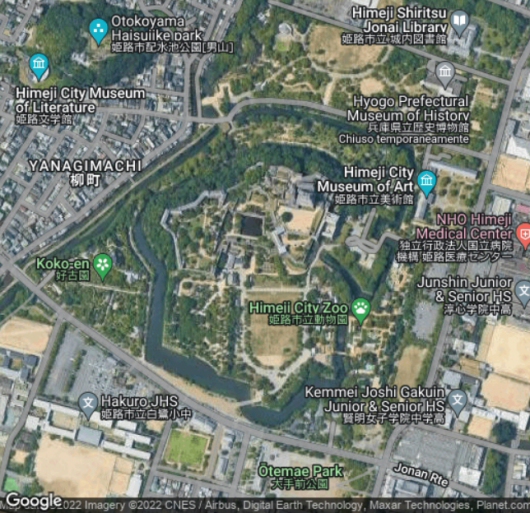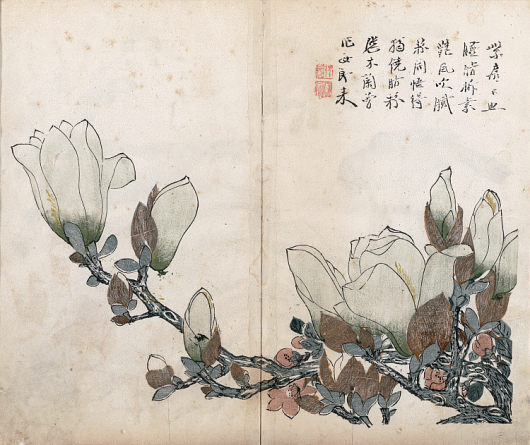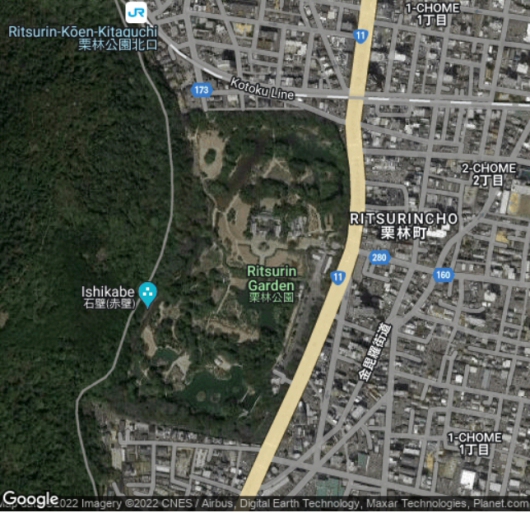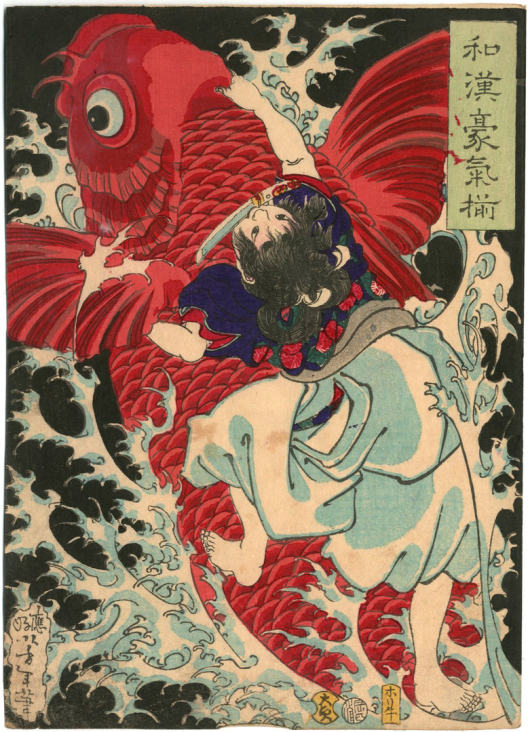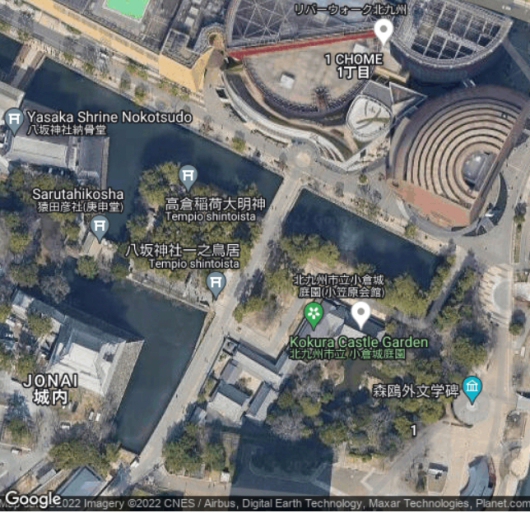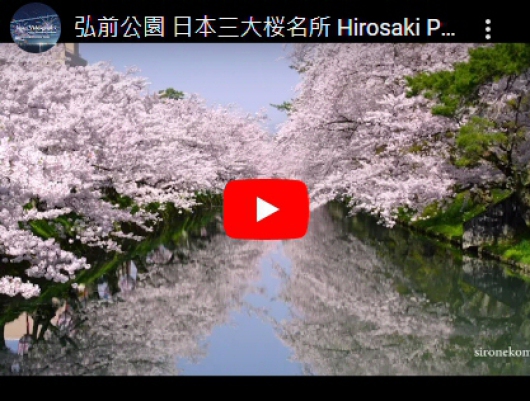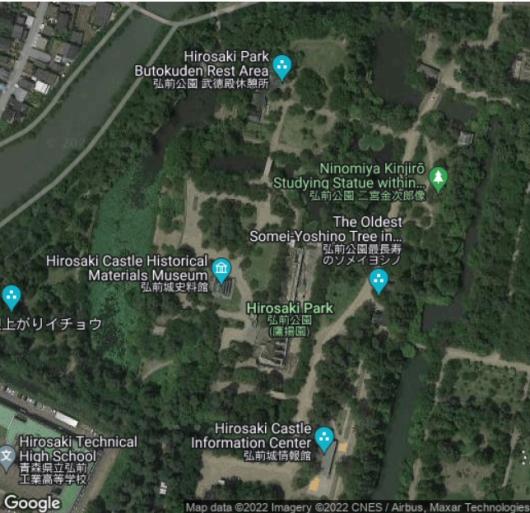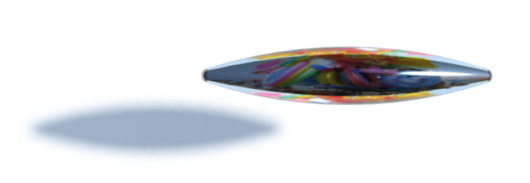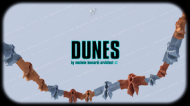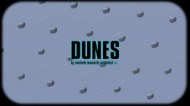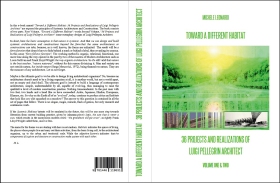Gardens 6
THE JAPANESE GARDENS 1
Tokyo Imperial Palace
Tokyo, Japan; 1888. More info on Wikipedia: Tokyo Imperial Palace and Edo Castle also known as Chiyoda Castle, 1457.
Utagawa Hiroshige (1797-1858): "Sendagi Dangozaka"; polychrome woodblock print; ink and color on paper, Edo period (1615-1868), 1856. Source: THE MET - The Metropolitan Museum of Art, New York, U.S.A.Website: www.metmuseum.org.
Yōshū Hashimoto Chikanobu (1838–1912): "Chiyoda Castle (Album of Men)", Meiji period (1868–1912), Triptych of polychrome woodblock prints; ink and color on paper, 1897. Source: THE MET - The Metropolitan Museum of Art, New York, U.S.A. Website: www.metmuseum.org.
Yōshū Hashimoto Chikanobu (1838–1912): "Chiyoda Castle (Album of Men)", Meiji period (1868–1912), Triptych of polychrome woodblock prints; ink and color on paper, 1897. Source: THE MET - The Metropolitan Museum of Art, New York, U.S.A. Website: www.metmuseum.org.
Yōshū Hashimoto Chikanobu (1838–1912): "Chiyoda Castle (Album of Women)", Meiji period (1868–1912), Triptych of polychrome woodblock prints; ink and color on paper, 1897. Source: THE MET - The Metropolitan Museum of Art, New York, U.S.A. Website: www.metmuseum.org.
Totoya Hokkei (1780–1850): "Shiei (?) on His Carp", Edo period (1615–1868), diptych of polychrome woodblock prints (surimono); ink and color on paper. Source: THE MET - The Metropolitan Museum of Art, New York, U.S.A. Website: www.metmuseum.org.
Yōshū Hashimoto Chikanobu (1838–1912): "Chiyoda Castle (Album of Women)", Meiji period (1868–1912), Triptych of polychrome woodblock prints; ink and color on paper, 1897. Source: THE MET - The Metropolitan Museum of Art, New York, U.S.A. Website: www.metmuseum.org.
Yōshū Hashimoto Chikanobu (1838–1912): "Chiyoda Castle (Album of Men)", Meiji period (1868–1912), Triptych of polychrome woodblock prints; ink and color on paper, 1897. Source: THE MET - The Metropolitan Museum of Art, New York, U.S.A. Website: www.metmuseum.org.
Totoya Hokkei (1780–1850): "Lobster on a Piece of Charcoal", Edo period (1615–1868), polychrome woodblock print (surimono); ink and color on paper. Source: THE MET - The Metropolitan Museum of Art, New York, U.S.A. Website: www.metmuseum.org.
Utagawa Kuniyoshi (1797-1858): "Life of Nichiren: A Vision of Prayer on the Waves"; polychrome woodblock print; ink and color on paper, Edo period (1615-1868), ca. 1835. Source: THE MET - The Metropolitan Museum of Art, New York, U.S.A. Website: www.metmuseum.org.
Utagawa Hiroshige (1797-1858): "Evening Rain at Karasaki, Pine Tree"; polychrome woodblock print; ink and color on paper, Edo period (1615-1868), 1797–1858. Source: THE MET - The Metropolitan Museum of Art, New York, U.S.A. Website: www.metmuseum.org.
Katsushika Hokusai (1760-1849): "Grasshopper and Iris"; polychrome woodblock print; ink and color on paper, Edo period (1615-1868), late 1820s. Source: THE MET - The Metropolitan Museum of Art, New York, U.S.A. Website: www.metmuseum.org.
"Album of Fifteen Triptychs of Famous Battlescenes" by Various Artists: Utagawa Kuniyoshi (1797–1861), Utagawa Kunisada (1786–1865), Utagawa Yoshikazu (active ca. 1850–1870), Utagawa Yoshitsuna (active ca. 1850–1860), Utagawa Yoshitora (active ca. 1850–80), Utagawa Yoshitsuru (active ca. 1840–1850), Utagawa Yoshihide (1832–1902), Utagawa Yoshitsuya (1822–1866), Utagawa (Gountei) Sadahide (1807–1878/79); Edo period (1615–1868); 19th century. Source: THE MET - The Metropolitan Museum of Art, New York, U.S.A. Website: www.metmuseum.org.
"Album of Fifteen Triptychs of Famous Battlescenes" by Various Artists: Utagawa Kuniyoshi (1797–1861), Utagawa Kunisada (1786–1865), Utagawa Yoshikazu (active ca. 1850–1870), Utagawa Yoshitsuna (active ca. 1850–1860), Utagawa Yoshitora (active ca. 1850–80), Utagawa Yoshitsuru (active ca. 1840–1850), Utagawa Yoshihide (1832–1902), Utagawa Yoshitsuya (1822–1866), Utagawa (Gountei) Sadahide (1807–1878/79); Edo period (1615–1868); 19th century. Source: THE MET - The Metropolitan Museum of Art, New York, U.S.A. Website: www.metmuseum.org.
Japanese sword (Peidao); mounting, ca. 1750–1800, from "The Collection of Giovanni P. Morosini", presented by his daughter Giulia, 1932. Source: THE MET - The Metropolitan Museum of Art, New York, U.S.A. Website: www.metmuseum.org .
"Album of Fifteen Triptychs of Famous Battlescenes" by Various Artists: Utagawa Kuniyoshi (1797–1861), Utagawa Kunisada (1786–1865), Utagawa Yoshikazu (active ca. 1850–1870), Utagawa Yoshitsuna (active ca. 1850–1860), Utagawa Yoshitora (active ca. 1850–80), Utagawa Yoshitsuru (active ca. 1840–1850), Utagawa Yoshihide (1832–1902), Utagawa Yoshitsuya (1822–1866), Utagawa (Gountei) Sadahide (1807–1878/79); Edo period (1615–1868); 19th century. Source: THE MET - The Metropolitan Museum of Art, New York, U.S.A. Website: www.metmuseum.org.
Wang Gai (Chinese, 1645-1710), et al.: "The Mustard Seed Garden Manual of Painting (Chinese: Jieziyuan huazhuan; Japanese: Kaishien gaden)"; polychrome woodblock print; ink and color on paper, Edo period (1615-1868), ca. 1748. Source: THE MET - The Metropolitan Museum of Art, New York, U.S.A. Website: www.metmuseum.org .
Tsukioka Yoshitoshi(1839-1892): "Ogumaru"; polychrome woodblock print; ink and color on paper, Edo period (1615-1868), 1866. Courtesy of Lady Mika Telokonshumo, Rome, Italy.
"Amazing cherry blossoms in Hirosaki, Japan".
BOOKS
- Gunter Nitschke: "Japanese Gardens", Taschen GmbH, Cologne, Germany, 2007.
The Japanese garden, like all gardens, is more than mere nature; it is nature crafted by man. It needs the hands of the designer to give it meaning. The Japanese garden belongs to the realm of architecture; at its best, it is nature as art. The phases of its history document the constant redefinition of man’s position within and towards nature. Its changing forms respond both to socio-economic developments and to religious and philosophical trends, and thereby reflect the spiritual climate in which its architecture was conceived.
At the same time as detailing the characteristics distinguishing and differentiating each of the five major epochs in the history of the Japanese garden, the author identifies the common motif which underlies them all: the recurrent attempt to unite beauty as natural accident and beauty as human-perfected type, to achieve an aesthetic symbiosis between the seeming randomness of natural form and the strict geometry of the right angle.
- Sophie Walker: "The Japanese Garden", Phaidon Editore, New York City, NY, U.S.A., 2017.
The most comprehensive exploration of the art of the Japanese garden published to date, this book covers more than eight centuries of the history of this important genre. Author and garden designer Sophie Walker brings fresh insight to this subject, exploring the Japanese garden in detail through a series of essays and with 100 featured gardens, ranging from ancient Shinto shrines to imperial gardens and contemporary Zen designs. Leading artists, architects, and other cultural practitioners offer personal perspectives in newly commissioned essays.
- Betchaku, Yaksuko, and Joan B. Mirviss: "Utamaro: Song of the Garden", The Viking Press, 1984.
Although far removed in subject matter from the elegant courtesans for which Kitagawa Utamaro (1753–1806) is justly renowned, the "Book of Insects" (Ehon mushi erabi, literally translated as "Picture Book of Selected Insects") is not merely a footnote to the artist's lifework. Rather, it is a pivotal work, one that assured Utamaro's future artistic career and anticipated subsequent developments in Japanese art. For in the book's fifteen delicate designs, the artist has woven threads of Japanese and Chinese artistic tradition together with a naturalism obtainable only through keen powers of observation. Although the title mentions only insects, a variety of plant and animal life is portrayed and rendered with such subtlety and graceful simplicity that the true genius displayed by the artist can be easily overlooked.
Although this book is now treasured for its illustrations, it was originally designed not simply as a picture book but as an anthology of specially commissioned poems on the subject of insects. In fact, the verses composed for each plate, new translations of which appear at the back of this volume, are appropriate poetic companions to Utamaro's unorthodox drawings. Yadoya no Meshimori, who compiled the poems and wrote the preface, was the leader of the kyōka (comic verse) movement, which emerged as a reaction against rigid classical traditions and allowed for great freedom of subject and style, for the poems often incorporate humorous or amorous undertones. In his preface Meshimori reveals that the idea for a selection of poetry based on the theme of love but apparently devoted to insects occurred to him and his friends as they sat listening to crickets and cicadas along a riverbank, an activity popular as early as the tenth century in Japan but given new life here as the poetic form and theme depart radically from tradition.
The original Ehon mushi erabi consists of two volumes bound so that the fifteen designs form double-page illustrations, each one including depictions of two different species and two accompanying poems. Based on a superb first-edition copy in the collection of The Metropolitan Museum of Art, Songs of the Garden reproduces the fifteen designs by Utamaro in a facsimile size, arranged in a fold-out format to be viewed in Western fashion, left to right. The printed texts, unlike the original, follow the illustrations and a note about the poetry and the translations.
LIBRI
- Sophie Walker: "Il giardino giapponese", L'Ippocampo Edizioni, Milano, 2017.
Il giardino giapponese tratta per la prima volta in maniera esaustiva questo affascinante universo, i suoi principi e la sua filosofia, ripercorrendo mille anni di storia. Nei suoi saggi tematici Sophie Walker - creatrice di giardini - offre al lettore nuove, penetranti intuizioni. I testi sono accompagnati dalle splendide immagini di oltre novanta giardini: dagli antichi santuari shintoisti ai giardini imperiali, fino ai più recenti progetti zen. Scritti inediti di personalità del mondo dell'arte, dell'architettura e del design come Tadao Andö, Anish Kapoor, Tan Twan Eng, John Pawson, Marcus du Sautoy e Lee Ufan interpretano in maniera personale questa forma di bellezza senza tempo che da secoli influenza l'architettura del paesaggio sia in Giappone che nel resto del mondo.
- Adolfo Tamburello: "Giappone", Coll.na Grandi Monumenti, Arnoldo Mondadori Editore, Milano, 1973.
Testo fondamentale sull'architettura e l'arte giapponese, irrilevante nel caso specifico che sia datato agli Anni '70 del secolo scorso, corredato da nutrita e impeccabile documentazione fotografica, nonché da disegni illustrativi eccellenti ed esiziali per capire il metodo costruttivo organico dell'architettura classica del Giappone.
Dalla copertina del libro, estratto dal testo dell'autore, Adolfo Tamburello:
"... Oggi che l'Oriente e l'Occidente si vogliono incontrare su un terreno, non tanto di "mutua comprensione" quanto di reciproca scoperta di valori, il Giappone rappresenta una voce avanzata di questo dialogo, e non solo perché sia in grado di fondere in un tutto omogeneo due espressioni di civiltà, ma anche perché l'interpretazione giapponese della stessa civiltà orientale ha enucleato elementi che si presentano di obiettiva validità per il mondo moderno. Per restare nel campo delle arti, che è il tema dominante di questo libro, possiamo prendere l'esempio dell'architettura. I valori spaziali e modulari dell'architettura giapponese sono progressivamente recepiti da tutta l'architettura moderna. Movimenti d'avanguardia, come il razionalismo e lo strutturalismo, devono molto al Giappone, così come in altre espressioni d'arte, figurative o letterarie, devono molto al Giappone l'impressionismo ed il simbolismo. Va rimosso l'ormai vieto pregiudizio della cultura giapponese come una somma di espressioni leziose che si manifestano in arte attraverso pazienti e minuscole composizioni, così come nella recente industria sembrano confermare i transistors. La civiltà giapponese non è affatto una civiltà di formiche. E' vero invece che l'arte giapponese ha condotto una sfida al monumentale ed è riuscita a formulare valori assoluti con ipotesi di misura."

